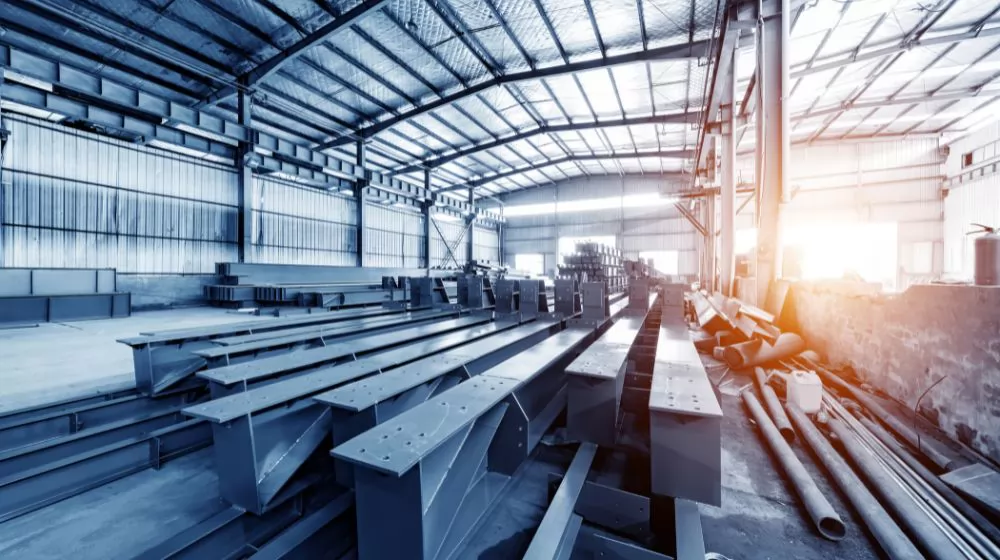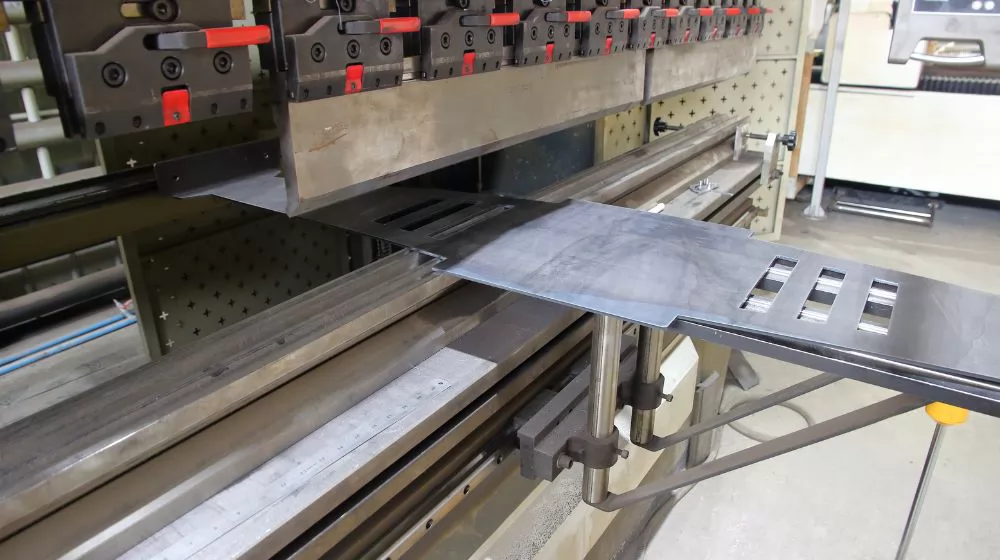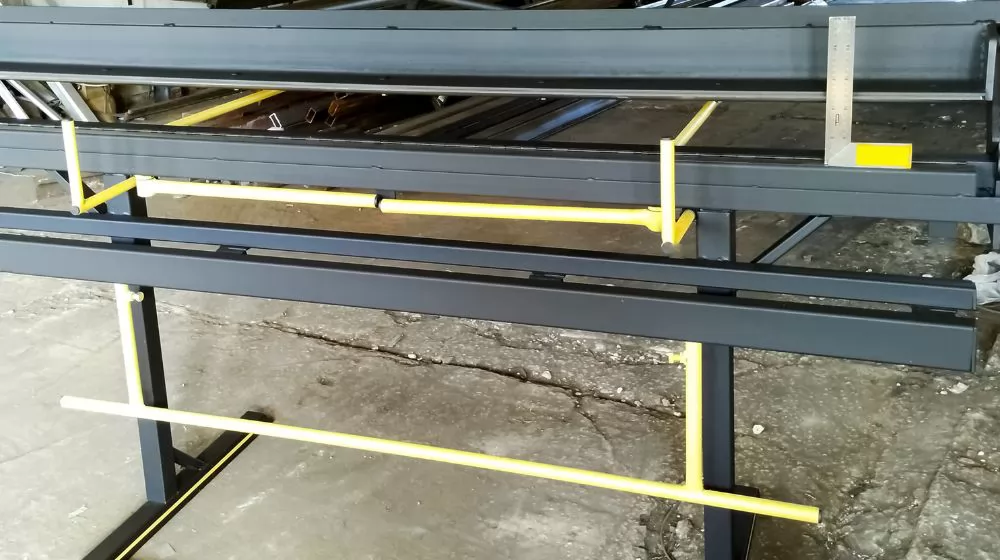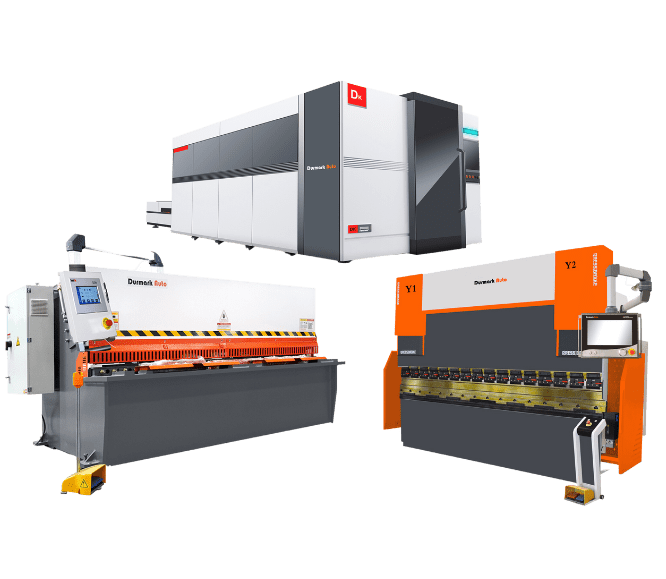
Request a Quote

Request a Quote

Stainless steel sheet is a versatile material widely used in various industries and applications. It is known for its durability and polished appearance. One of the most popular applications of stainless steel sheet is bending, which can be achieved through various techniques. Let's explore how bending stainless steel sheet is carried out.
Bending stainless steel sheet refers to the process of bending stainless steel sheets into the desired shape. This is typically done using mechanical means, such as using a rolling machine, bending machine, or hydraulic press. Firstly, the stainless steel sheet is placed on a suitable fixture or worktable. Then, through the use of machinery or manual manipulation, the stainless steel sheet is gradually bent into the desired shape. This can be achieved by applying appropriate pressure or force to make the stainless steel sheet bend. After the bending is completed, further trimming and processing can be done to ensure that the resulting bent stainless steel sheet meets the required dimensions and shape.
Bending stainless steel sheet requires a certain level of skill and experience to ensure that the bending process does not cause damage or fractures to the stainless steel sheet. Additionally, selecting the appropriate stainless steel material and thickness is crucial to ensure that the bent stainless steel sheet has the desired strength and durability.

Corrosion resistance: Stainless steel sheet is renowned for its exceptional corrosion resistance. It contains chromium, which forms a protective oxide layer on the surface, shielding it from rust and corrosion even in harsh environments, exposure to moisture, chemicals, or acids.
Strength and durability: Stainless steel sheet is a robust and durable material. It maintains its structural integrity and strength even under high temperatures, heavy loads, or extreme conditions. This makes it suitable for applications that require long-term durability and resistance to mechanical stresses.
Versatility in finishes: Stainless steel sheet comes in various finishes, such as brushed, polished, or patterned. This versatility allows for different aesthetic options, making it suitable for architectural, interior design, and decorative applications.
Hygiene: Stainless steel sheet exhibits excellent hygienic properties, making it a preferred material in industries such as food processing, medical, and pharmaceutical. It is non-porous, easy to clean, and resistant to bacterial growth, making it ideal for applications that require strict cleanliness and hygiene standards.
High-temperature and fire resistance: Stainless steel sheet demonstrates excellent resistance to high temperatures. It can withstand prolonged exposure to elevated temperatures without significant deformation or loss of strength. Additionally, it has good fire resistance and does not contribute to the spread of flames.
Recyclability: Stainless steel sheet is highly sustainable as it is 100% recyclable. It can be melted down and reused without any loss of properties, making it an environmentally friendly choice.
Mechanical bending: This involves using mechanical equipment such as a rolling machine, bending machine, or hydraulic press to bend stainless steel sheets. By adjusting the parameters and processes of the equipment, appropriate force and pressure can be applied at the desired locations to bend the stainless steel sheet into the desired shape.
Heat bending: In heat bending, the stainless steel sheet is heated to increase its plasticity, making it easier to bend. This is typically achieved using a torch, flame, or induction heating as a heat source. After heating, the stainless steel sheet can be bent using fixtures or mechanical equipment.
Hydraulic bending: Hydraulic bending involves using a hydraulic system to apply force and pressure to bend the stainless steel sheet. By adjusting the parameters of the hydraulic system, the bending angle and intensity can be controlled, allowing for precise bending.
Manual bending: For smaller-sized stainless steel sheets or complex shapes, manual bending can be employed. This typically involves using hand tools such as hammers, pliers, or manual benders to gradually apply force and adjust the angle during the bending process.

Bending stainless steel sheets offers numerous advantages, making it a popular choice for those seeking customized products or projects. Firstly, it is worth noting that stainless steel sheets are resistant to corrosion, even when exposed to moisture or other harsh elements such as UV rays or extreme temperatures. This means that when you bend stainless steel sheets into shape, you don't have to worry about rusting or other signs of corrosion over time.
Another benefit of bending stainless steel sheets is their strength. Even after being bent into various shapes, the metal will maintain its strength and won't lose any structural integrity over time. In fact, depending on the grade of stainless steel used, the metal can be bent multiple times without losing any durability. This makes it an ideal choice for projects that require long-term wear resistance.
Lastly, one of the great things about bending stainless steel sheets is that there are several different methods to achieve it. Depending on your project requirements and budget limitations, you can choose from various techniques such as manual forming (using hand tools), press brake forming (using a press machine), or roll forming (using machinery). Each technique has its own advantages and disadvantages, and it is important to carefully weigh these pros and cons before deciding which method to use to meet your specific project needs.
Preparation: Firstly, prepare a stainless steel sheet and the necessary tools and equipment, including fixtures, rolling machines, bending machines, or hydraulic presses.
Positioning and clamping: Place the stainless steel sheet on a worktable or fixture and ensure it is in the correct position and angle. Use fixtures or other clamping devices to secure the stainless steel sheet, preventing it from moving or deforming.
Selection of bending method: Choose the appropriate bending method based on specific requirements, such as mechanical bending, heat bending, or hydraulic bending.
Bending operation: Perform the corresponding operation based on the selected bending method. If it is mechanical bending, use a rolling machine, bending machine, or similar equipment to gradually apply force and pressure to bend the stainless steel sheet into the desired shape. If it is heat bending, use a torch, flame, or induction heating as a heat source to heat the stainless steel sheet and bend it at the appropriate temperature. If it is hydraulic bending, use a hydraulic system to apply force and pressure to bend the stainless steel sheet to the desired angle.
Inspection and trimming: After the bending is completed, inspect the bent area to ensure it meets the required dimensions and shape. Carry out trimming and adjustments as needed to achieve the desired final result.
Surface treatment (optional): Optionally, perform surface treatments on the bent stainless steel sheet, such as polishing, coating, or other decorative finishes, based on the requirements.

Material selection: Choose the appropriate grade of stainless steel sheet for your specific bending application. Different grades have varying levels of ductility and workability, which can affect the ease and quality of the bending process.
Bending method: Select the most suitable bending method based on the thickness and grade of the stainless steel sheet, as well as the desired bend radius and angle. Common bending methods include press brake bending, roll bending, and incremental bending.
Tooling and equipment: Ensure that you have the right tools and equipment for bending stainless steel sheet. This may include press brakes, rollers, or specialized bending machines. The tooling should be designed to minimize marking or scratching on the surface of the stainless steel sheet during the bending process.
Bend radius and angle: Determine the appropriate bend radius and angle for your specific application. The bend radius should be within the recommended range for the stainless steel grade to avoid cracking or excessive deformation. It is important to follow industry guidelines or consult with experts to determine the optimal bend radius and angle.
Surface protection: Consider using protective measures to prevent scratching or marring the surface of the stainless steel sheet during bending. This can include using protective films, pads, or coatings on the bending tools or employing specialized tooling designed for stainless steel.
Springback: Keep in mind that stainless steel has a tendency to exhibit springback after bending. This means that the material may partially return to its original shape once the bending force is released. To compensate for springback, the initial bend angle may need to be slightly overbent.
Testing and quality control: Conduct regular quality checks during the bending process to ensure the desired bend angles, dimensions, and surface finish are achieved. This may involve using measuring tools, such as calipers or gauges, to verify the accuracy of the bends.
In summary, bending stainless steel sheet offers the benefits of corrosion resistance, strength, and versatility. It is a durable material that retains its structural integrity even after being bent into various shapes. With multiple bending methods available, it can be tailored to suit specific project requirements. Whether for architectural, industrial, or decorative purposes, bending stainless steel sheet provides a reliable and attractive solution.
.png)



